The Occult Symbolism of Movie “Metropolis” and its Importance in Pop Culture
http://vigilantcitizen.com/musicbusiness/the-occult-symbolism-of-movie-metropolis-and-its-importance-in-pop-culture/
Fritz Lang’s 1927 movie “Metropolis” is one of those timeless classics that withstand the test of time. Rather than becoming forgotten and obsolete, “Metropolis” is increasingly relevant as many of its predictions are becoming reality. We will look at the underlying occult message of the film and the usage of its imagery in the acts of pop stars such as Lady Gaga, Madonna, Beyonce, Kylie Minogue and others.
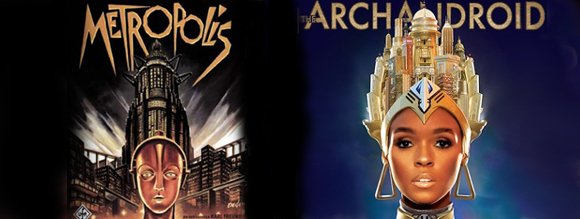
Metropolis is a silent science-fiction movie released in 1927 by Fritz Lang, a master of German Expressionism. Set in a futuristic dystopia divided into two distinct and separate classes—the thinkers and the workers—Metropolis describes the struggles between the two opposite entities. Knowing that it was produced in 1927, viewing this movie today is quite an experience as many “sci-fi” aspects of the plot are eerily close to reality. Metropolis describes a society where the “New World Order” has already taken been implemented and a select elite live in luxury while a dehumanized mass work and live in a highly monitored hell.
As we have seen in previous articles on The Vigilant Citizen, Metropolis is excessively echoed in popular culture, especially in the music business. Whether it be in music videos or photo shoots, pop stars are often portrayed as the character Maria, an android programmed to corrupt the morals of the workers and to incite a revolt, giving the elite an excuse to use violence repression. Are pop stars used by the elite in the same matter, to corrode the morals of the masses?
The movie opens by showing the workers and their city, situated deep below the earth’s surface. They are shown dressed alike, walking in sync, holding their heads down in submission, resignation and desperation. Throughout the movie, the human cattle is depicted as being physically and mentally exhausted, highly impressionable and, let’s say it, all-around dumb. Like a flock of sheep, the workers move in crowds, are very impressionable and can easily be deceived. This description of the masses corroborates those of Walter Lippmann, an American thinker who, five years earlier in Public Opinion, compared the general public to a “bewildered herd” that is not qualified to manage its own destiny. Joseph Goebbels, the head of propaganda of the Nazi regime, was also in accord with the movie’s conception of the general public. Hitler famously said “How fortunate for leaders that men do not think”.
The workers labor in a monstrous machine, a hellish industrial complex where they must accomplish repetitive and dehumanizing tasks. At one point, the machine is compared to Moloch, the ancient Semitic deity honored by human sacrifices.
The tasks assumed by the workers are purely mechanical, needing absolutely no brain power, making them nothing more than an extension of the machine.
If the workers live in a hellish underground dystopia, the thinkers conversely evolve in a gleaming utopia, a magnificent testimony of human achievement. This shiny city could not, however, be sustained without the existence of the Machine (Moloch) and its herds of workers. On the other hand, the Machine would not exist without the need to sustain a city. We find here a dualistic relation where two opposite entities exist in mutual dependence, a concept that has deep occult resonance.
Joh’s son, named Freder, who, like all sons of managers, was enjoying a life of luxury, discovers the harsh reality of the workers of down under. Wanting to experience the worker’s reality first-hand, Freder descends to the lower level and trades places with a worker. Freder therefore becomes a Christ-like figure, a savior who descends from above. He also becomes enamoured with Maria, a saintly young women from the proletariat.
Maria is a charismatic woman that is highly admired by her fellow workers. Understanding their suffering and despair, and knowing that a revolt is brewing, Maria preaches peace and patience, prophesying the coming of a “mediator”, who would become the “heart between the head (the thinkers) and the hand (the workers)
At one point, Maria tells the story of the tower of Babel, upon which would be written:
Upon learning that the workers are planning an uprising, Joh Federsen seeks the advice of Rotwang, an inventor and mad scientist. Although his work utilizes the latest of technologies, many clues within the movie indicate that he also taps into ancient occult knowledge to create his inventions. He is said to live in “a small house overlooked by the centuries,” symbolically meaning that the scientist’s arcana descended from ancient occult traditions; the basement of his house has a secret trap door leading to 2,000 year-old catacombs, further alluding to the ancient and mysterious sources of Rotwang. Furthermore, the front door of his house bears a pentagram, which refers to the Pythagoreans, occultism and Freemasonry.
If we were to do real-life comparisons, Rotwang is to Joh Fredersen what John Dee was to Queen Elizabeth I: an esteemed advisor immersed in the worlds of science, magic, astrology and Hermetic philosophy. If Fredersen represents our world’s rulers, Rotwang is the occult pendant of decision-making, the mystical entity that is hidden from the public but always historically present.
The inventor proudly presents to Fredersen his latest invention, the Machine-Man, which he considers to be the “Man of the Future”. The android has the faculty of taking the form of any person and, says Rotwang, “no one will be able to tell a Machine Man from a mortal!”. The transhumanist dream was already present back in the early 1920s.
Fredersen then tells Rotwang to give the Machine-Man the likeness of Maria in order to use her credibility and charisma to spread corruption among the workers.
So what do today’s pop stars have in common with this android, programmed by the rulers, with a mix of science and occultism? Well … everything.
Back to the movie. The android completed, Rotwang tells it:
The Maria android is then sent to Yoshiwara, a man’s club, where she performs erotic dances. In one of her acts, she is portrayed as Babylon, the Great Harlot from the Apocalypse.
Do this scene remind you of a classic music video?
The programmed Maria performs mesmerizing dances in front of an avid public, causing men to fight, to lust, to be jealous and to commit the rest of the deadly sins. When she’s with her fellow workers, Maria acts as an “agent-provocateur”, inciting the working men to riot and giving Joh Fredersen reason to use force against them. She is basically acting against the best interest of the public and for the interest of the elite.
With the help of their foreman (because they can’t really think for themselves), the workers ultimately realize that they have been mislead by the android. Believing that she’s a witch, they find robot-Maria and burn her at the stake.
A bunch of things happen after that, but I won’t spoil the ending for you (though can you really be mad at someone for spoiling the ending of a 83-year old movie?). The movie finishes with this caption:
Which is kind of reminiscent of this music video ending:
Who is the Freder of today’s working class? The media. Media is the mediator. That is its function.
Mass media manipulate the masses’ thoughts and feelings on a daily basis, tricking them into loving their oppression. Popular culture is the entertainment branch of mass media and pop music is the fun way to communicate the elite’s message to the youth. References to Metropolis in pop music are almost winks to those in the know, the initiates, as if to say “this star is working for us”. So go ahead and be an ignorant, degenerate and materialistic person, like in the videos … that’s what they want you to be.
So why do singers love it so much? Well they probably don’t love it as much as those behinds the scenes, the directors and image-makers, those who have power in the music business. They decide what the stars do and stand for. And today’s popular culture is elitist, permeated with Illuminati symbolism and promotes moral degradation and the debasement of traditional values. Our pop stars channel Maria, the programmed android, through their acts and accomplish the same functions. Why else would they dress like her? If artists always embodied absolute freedom and creativity, why do singers play the role of a mind-controlled android? Because that’s what they are.
Metropolis is indeed a great movie. So great that it is only becoming relevant 80 years after its release. But if the elite have it their way, it will be even more relevant in the years to come.
http://vigilantcitizen.com/musicbusiness/the-occult-symbolism-of-movie-metropolis-and-its-importance-in-pop-culture/
Fritz Lang’s 1927 movie “Metropolis” is one of those timeless classics that withstand the test of time. Rather than becoming forgotten and obsolete, “Metropolis” is increasingly relevant as many of its predictions are becoming reality. We will look at the underlying occult message of the film and the usage of its imagery in the acts of pop stars such as Lady Gaga, Madonna, Beyonce, Kylie Minogue and others.

Metropolis is a silent science-fiction movie released in 1927 by Fritz Lang, a master of German Expressionism. Set in a futuristic dystopia divided into two distinct and separate classes—the thinkers and the workers—Metropolis describes the struggles between the two opposite entities. Knowing that it was produced in 1927, viewing this movie today is quite an experience as many “sci-fi” aspects of the plot are eerily close to reality. Metropolis describes a society where the “New World Order” has already taken been implemented and a select elite live in luxury while a dehumanized mass work and live in a highly monitored hell.
As we have seen in previous articles on The Vigilant Citizen, Metropolis is excessively echoed in popular culture, especially in the music business. Whether it be in music videos or photo shoots, pop stars are often portrayed as the character Maria, an android programmed to corrupt the morals of the workers and to incite a revolt, giving the elite an excuse to use violence repression. Are pop stars used by the elite in the same matter, to corrode the morals of the masses?
Movie Analysis
The Workers
The workers labor in a monstrous machine, a hellish industrial complex where they must accomplish repetitive and dehumanizing tasks. At one point, the machine is compared to Moloch, the ancient Semitic deity honored by human sacrifices.
The Thinkers
Joh Fredersen, the Demi-God
The city was founded, built and is run by the autocratic Joh Fredersen. As the creator and only ruler of Metropolis, Fredersen is likened to the Gnostic demiurge, a demi-god who is creator and ruler of the material world.Maria
At one point, Maria tells the story of the tower of Babel, upon which would be written:
“Great is the world and its Creator! And great is Man!”This statement has a deep resonance in Mystery Schools as it is taught that men have the potential to become gods through enlightenment. Throughout the ages, monuments and architecture were used to communicate the principles of the Mysteries and to celebrate the greatness of the human mind. Partially for those reasons, there are numerous links between Freemasonry and the Tower of Babel.
“As regards to Masonry, Babel of course represented a Masonic enterprise and early expositors reaped full benefit from the facts. They remembered that the people, who were of ‘one language and one speech’ journeyed from the East to the West, like those who have been tried and proved as Master Masons. When they reached an abiding place in the land Shinar, it is affirmed that they dwelt therein as Noachide, being the first characteristic name of Masons. It was here that they built their high tower of confusion. Out of evil comes good, however, and the confusion of tongues gave rise to ‘the ancient practice of Masons conversing without the use of speech.’”
-Arthur Edward Waite, A New Encyclopedia of Freemasonry and of Cognate Instituted Mysteries: Their Rites, Literature and History, Volume I
“In several early Masonic manuscripts – for example, the Harleian, Sloane, Lansdowne, and Edinburgh-Kilwinning – it is stated that the craft of initiated builders existed before the Deluge, and that its members were employed in the building of the Tower of Babel.”
- Manly P. Hall, The Secret Teachings of All Ages
“… at the making of the Tower of Babel there was Masonry first much esteemed of, and Nimrod was a Mason himself and loved well Masons.”However, says Maria, “one man’s hymns of praise became the other man’s curse”. In other words, the monument praising the greatness of the human spirit was built with the blood and sweat of workers who knew nothing of the Thinker’s grand vision. And, in the film, the same thing is happening all over again. The name of the demi-god Joh Fredersen’s headquarters? Of course … The New Tower of Babel.
- John T Lawrence, The Perfect Ashlar
Rotwang
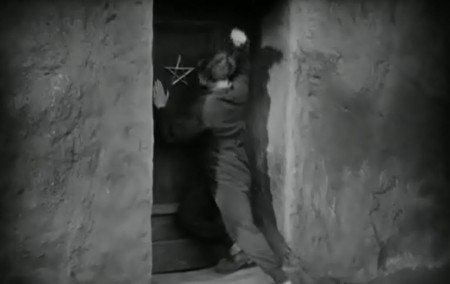
- A pentagram on Rotwang’s door. Disciples of Pythagoras affixed a pentagram on their door as a secret sign of mutual recognition. The sign and its meaning could remain secret despite that public display because only those initiated into the mysteries of Pythagoras’ geometry were able to draw it correctly and to appreciate its deep significance as a symbol for and gateway to those mysteries.
If we were to do real-life comparisons, Rotwang is to Joh Fredersen what John Dee was to Queen Elizabeth I: an esteemed advisor immersed in the worlds of science, magic, astrology and Hermetic philosophy. If Fredersen represents our world’s rulers, Rotwang is the occult pendant of decision-making, the mystical entity that is hidden from the public but always historically present.
The inventor proudly presents to Fredersen his latest invention, the Machine-Man, which he considers to be the “Man of the Future”. The android has the faculty of taking the form of any person and, says Rotwang, “no one will be able to tell a Machine Man from a mortal!”. The transhumanist dream was already present back in the early 1920s.
Fredersen then tells Rotwang to give the Machine-Man the likeness of Maria in order to use her credibility and charisma to spread corruption among the workers.
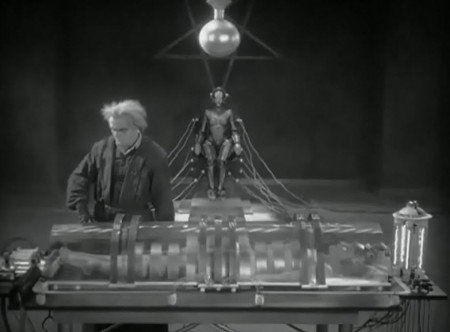
- Maria laying down while Rotwang gives her likeness to the android. Notice the inverted pentagram right above the Machine-Man’s head. If the upright pentagram represents healing, mathematical perfection and the five elements, the inverted pentagram stands for the corruption of those principles and black magic.
So what do today’s pop stars have in common with this android, programmed by the rulers, with a mix of science and occultism? Well … everything.
“I want you to visit those in the depths, in order to destroy the work of the woman in whose image you were created!”Robot-maria responds:
With the help of their foreman (because they can’t really think for themselves), the workers ultimately realize that they have been mislead by the android. Believing that she’s a witch, they find robot-Maria and burn her at the stake.
A bunch of things happen after that, but I won’t spoil the ending for you (though can you really be mad at someone for spoiling the ending of a 83-year old movie?). The movie finishes with this caption:
The Moral of the Story
The moral of the story of Metropolis is not “let’s abolish all inequities and rebuild a world where everyone is equal” and it is certainly not “let’s be democratic and vote for who we want as a ruler.” It is more “let’s send the workers back to the depths where they belong, but with the addition of a mediator, who will be the link between the workers and the thinkers”. So, when all is said and done, the movie is intrinsically “elitist,” as it still calls for the existence of an elite group of people holding most of the resources and managing a working class. In the end, the workers – and Freder – were duped, believing that their conditions would change. In fact, the status-quo remained and Joh even got his naive son to give the elite a friendly image while reporting everything happening in the depths, resulting in tighter surveillance and control.Who is the Freder of today’s working class? The media. Media is the mediator. That is its function.
Analogies Between Metropolis and Today’s Pop Culture
But why Metropolis? Why has it become the code for “Illuminati star”? If you’ve read other articles on this site, you’ve probably realized that the movie touches upon all of the themes of today’s “Illuminati agenda”: transhumanism, mind control, dark occultism, degradation of morals, police state, all-seeing government. Metropolis is basically a blueprint for population control. Like Maria, today’s pop stars are recruited from the working class and literally programmed and reinvented to become the hidden ruler’s spokespersons. Notice how many pop stars have wild alter-egos, with a different name and personality. Part of the stars’ role is to promote the elite’s agenda through music and videos, making it sexy and attractive.In Conclusion
Metropolis is a definitely a movie “by the elite, for the elite”. It tackles the concerns of those managing the world and presents a solution that does not disturb the status-quo. The movie is also permeated with Masonic symbolism and contains many symbols referring to ancient Mysteries which were meant to be decoded by proper initiates. In other words, the movie was primarily aimed at the ruling class.So why do singers love it so much? Well they probably don’t love it as much as those behinds the scenes, the directors and image-makers, those who have power in the music business. They decide what the stars do and stand for. And today’s popular culture is elitist, permeated with Illuminati symbolism and promotes moral degradation and the debasement of traditional values. Our pop stars channel Maria, the programmed android, through their acts and accomplish the same functions. Why else would they dress like her? If artists always embodied absolute freedom and creativity, why do singers play the role of a mind-controlled android? Because that’s what they are.
Metropolis is indeed a great movie. So great that it is only becoming relevant 80 years after its release. But if the elite have it their way, it will be even more relevant in the years to come.


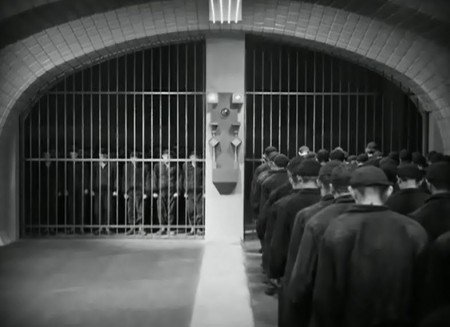
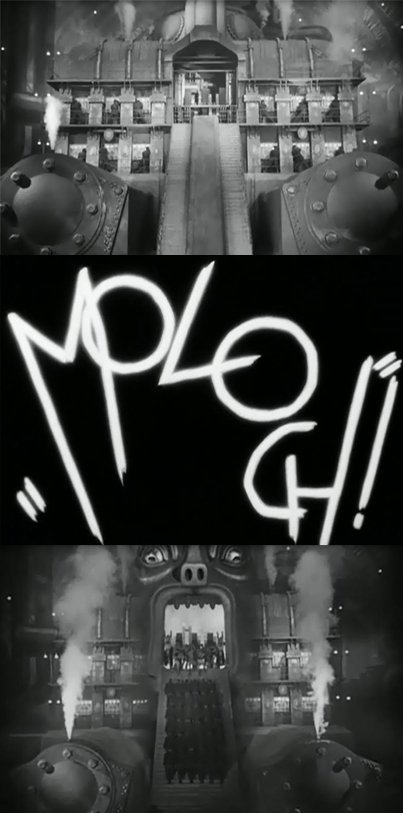
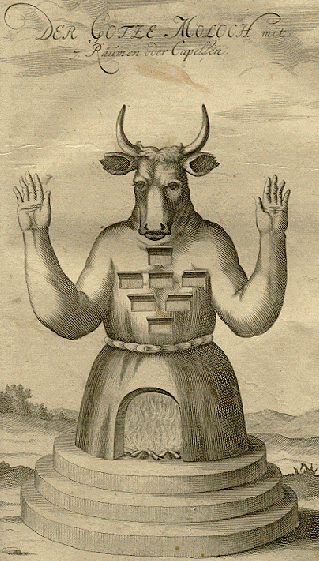
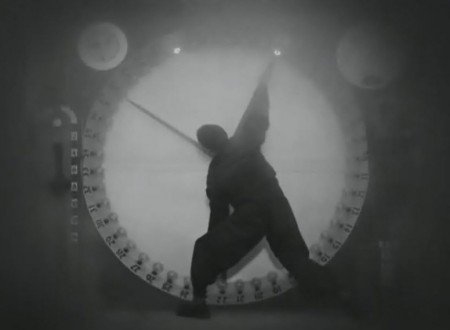
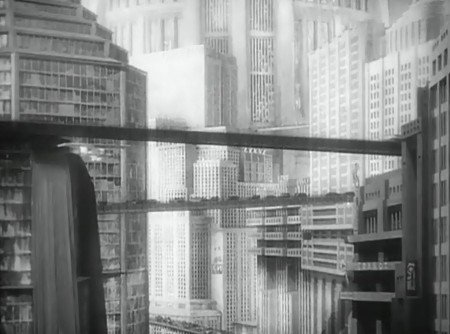
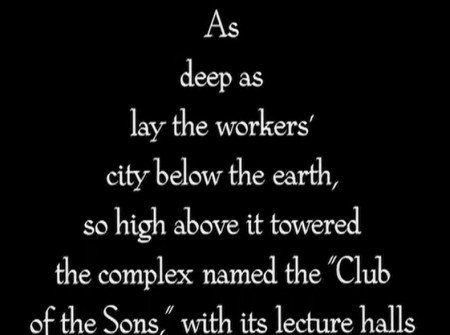
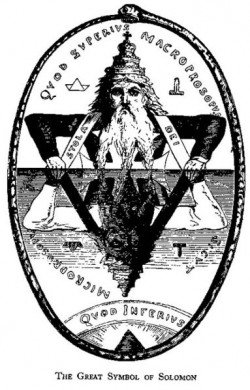
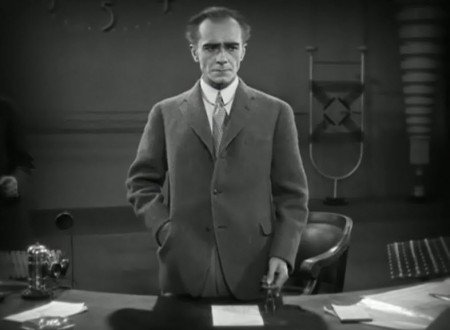
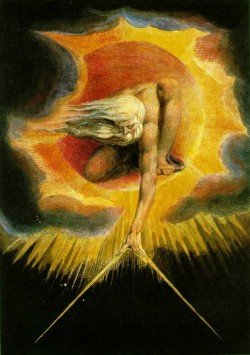
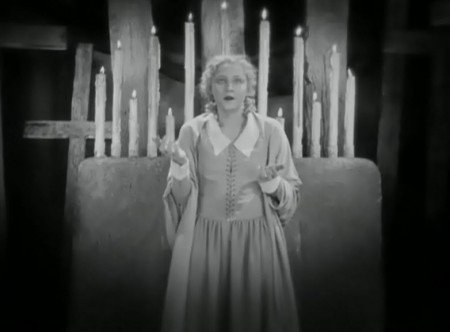
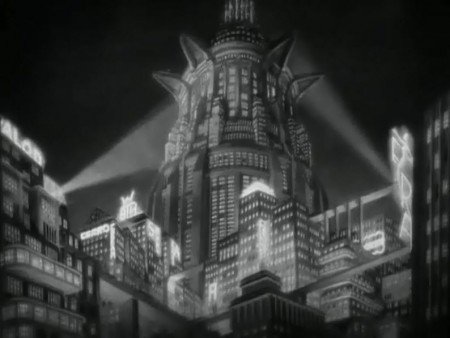
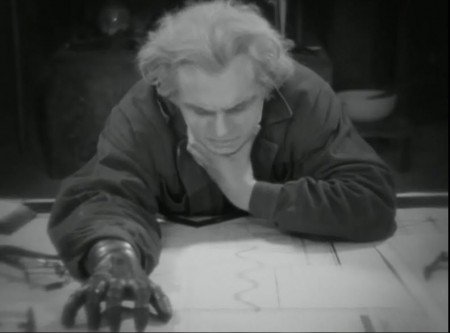
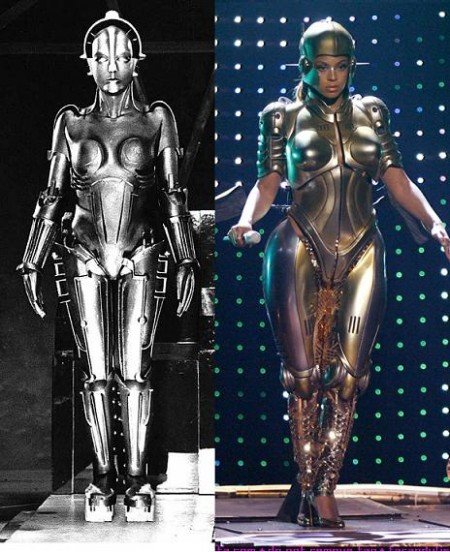
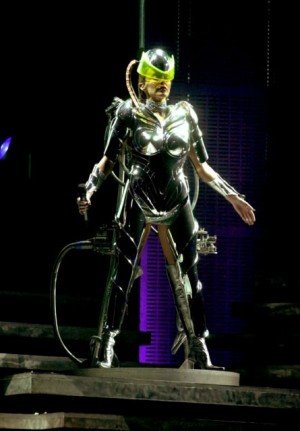
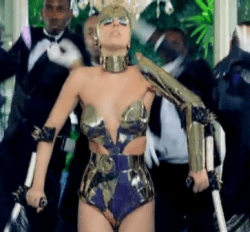

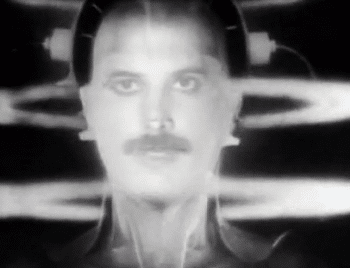
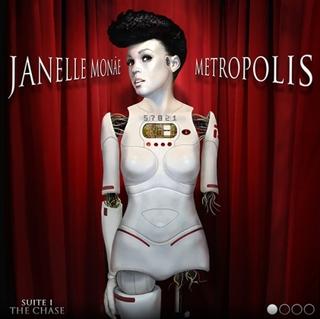
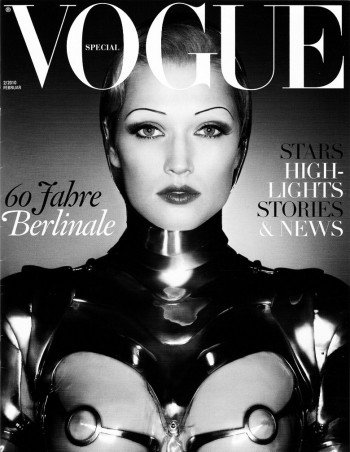
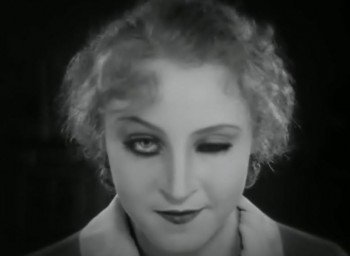
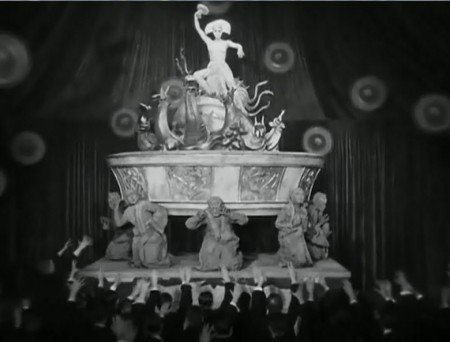
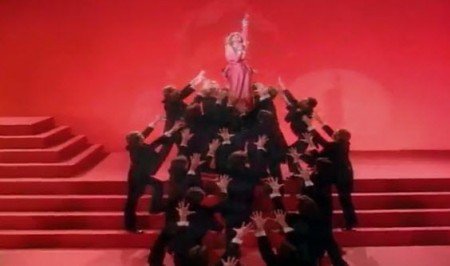
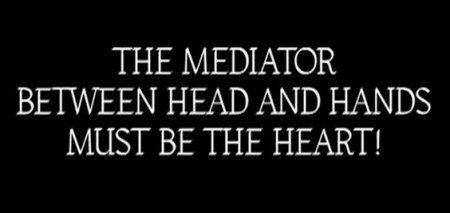
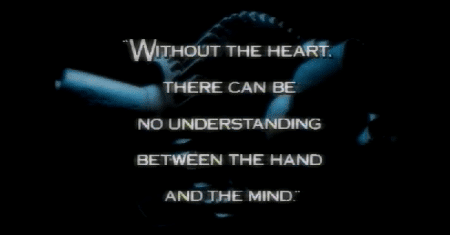
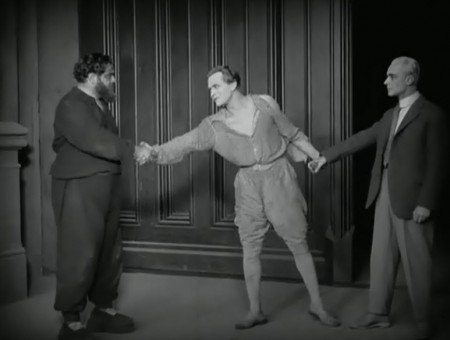
No comments:
Post a Comment